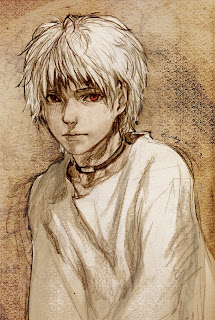November/December Book Assessment
You are reading historical fiction. Historical fiction is fiction (a made-up story) set in a real time and place (the place in general is real -- our own world -- but a particular town, home, etc. may be fictional), and sometimes there are some real characters in the story. Events may be manufactured, but they fit with events that really happened in that time and place -- they could have happened.
-- You will be researching the reality behind the story of the historical fiction book you are reading.
See suggestions for research in the handout at
Asking Questions and Finding Answers .
-- Your end product will be a presentation of facts about that reality. You will use informal citation to introduce each fact.
-- You will hand in with your prepared product a list of where you found your facts: a "Works Cited" list. -- -- You will use MLA style to prepare that list. You may use easybib.com or citationmachine.net to prepare your Works Cited list.
-- You will not plagiarize. You will study about your facts, then present them in your own word.
Download a handout on research and how you need to cite sources at Asking Questions and Finding Answers .
easybib.com or
http://citationmachine.net/
When you do your Works Cited Page, you need at least three (3) sources. If you use Wikipedia, you need four (4).
Purpose:
1. You will learn about a time and place, event, or person or people from the past.
2. You will practice doing research, and hopefully learn new research skills and understandings.
3. You will learn how to cite information from sources.
4. You will practice writing about a topic after you have researched it.
5. You will learn how to avoid plagiarizing.
6. Your product (project) will teach other people about your subject.
Audience:
The teacher, your classmates, seventh graders in future years, others who may see your product.
Your general procedure will be --
1. Select an historical fiction book about a subject or era you find very interesting.
2. Read your book.
3. As you are reading, think of questions you could ask about the historical setting: about times, places, events, or people.
4. Do research to answer the questions you have asked, and to find out even more. (You may be doing your research and creating your project as you read your book.)
5. Select the most interesting or important facts about your subject.
6. Present them in a PowerPoint, on a neat and attractive poster, as a scrapbook, as a videotaped news program (handed in with a written script), or in another way you propose and the teacher approves. All projects should include illustrations (pictures, photos,maps, graphs or charts, representative art, etc.).
You could create a blog for this assignment.
Grading:
5 points for each fact that is important or interesting, and is stated clearly so the reader or viewer can understand. Each fact will include an informal citation.
No points will be given for any fact for which the source is not cited.
75 points or 15 facts will be full points for that aspect of the assignment.
If you got the full 25 points below and provided 10 facts, you would receive a 75%. Twelve facts and full points on quality would receive 85%.
25 points will be based on the quality of your product:
25 (outstanding and attractive), 15 (okay), 5 (handed in, but doesn't show much effort)
Considered in this grade will be these items:
conventions (capitalization, punctuation, spelling)
neatness and attractiveness of the product
text clearly and legibly written in blue or black ink or typed (no pencil for text)
materials used are appropriate and are well-kept (no spiro-bits, no projects that have been
scrunched or spilled on)
These projects will be due December 10/11.
Examples of Informal Citations and Entries for a Works Cited Page
When you do your Works Cited Page, you need at least three (3) sources. If you use Wikipedia, you need four (4).
Each time I give a fact, I use informal citation to tell where I found it.
Fact: According to whitehouse.gov, William Howard Taft was President of the United States from 1909- 1913.
Fact: Also according to the whitehouse.gov entry about President Taft, Theodore Roosevelt picked Taft to be his successor, then later worked to defeat him when Taft tried for re-election.
I'm collecting information to create a works cited entry: Title: "William Howard Taft" http://www.whitehouse.gov/history/presidents/wt27.html , accessed on February 5, 2008.
Fact: In January of 1910, the New York Times reported that Austria had accused Russia of espionage.
Information to use in a works cited entry: http://query.nytimes.com/mem/archive-free "AUSTRIA ACCUSES RUSSIA.; Military Attache Said to Have Been Involved In Espionage." January 27, 1910. Found in the New York Times Archives online -- accessed February 5, 2008.
Other Helps and Links:
Sample of Facts with Works Cited Page Your facts should be turned into a PowerPoint, a poster, a scrapbook or electronic scrapbook, or another quality presentation.
Checksheet for using internet sources: http://www.readwritethink.org/lesson_images/lesson983/checklist.pdf
A PowerPoint on doing research on the web:
The handout to go with the PowerPoint:http://www.readwritethink.org/lesson_images/lesson983/student.pdf
This lesson has lots of great suggestions and helps for creating a PowerPoint and for citing sources and creating Works Cited page: http://www.readwritethink.org/lessons/lesson_view.asp?id=787
The handout to go with the PowerPoint: http://www.readwritethink.org/lesson_images/lesson983/student.pdf








